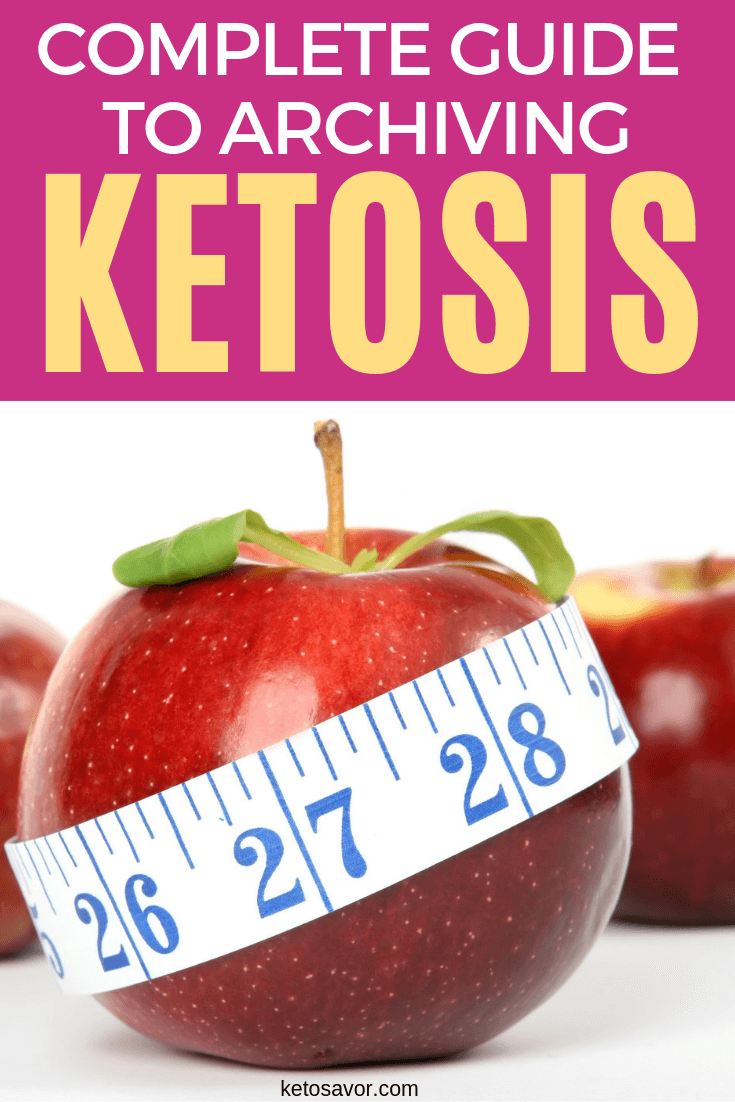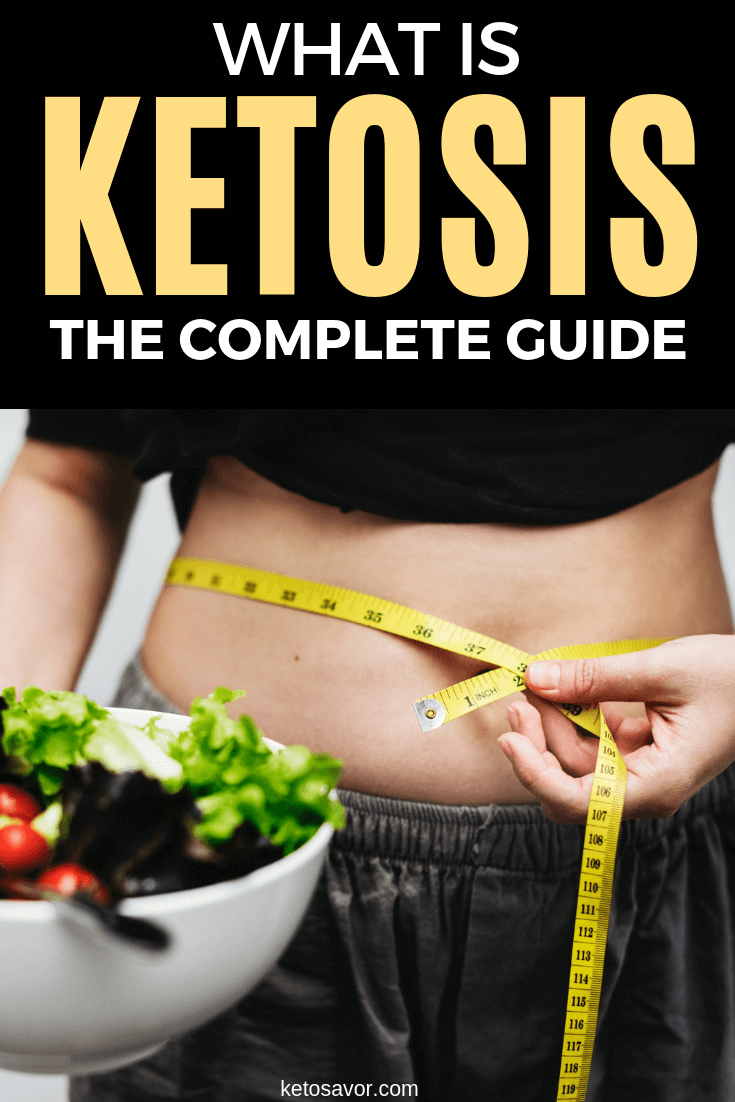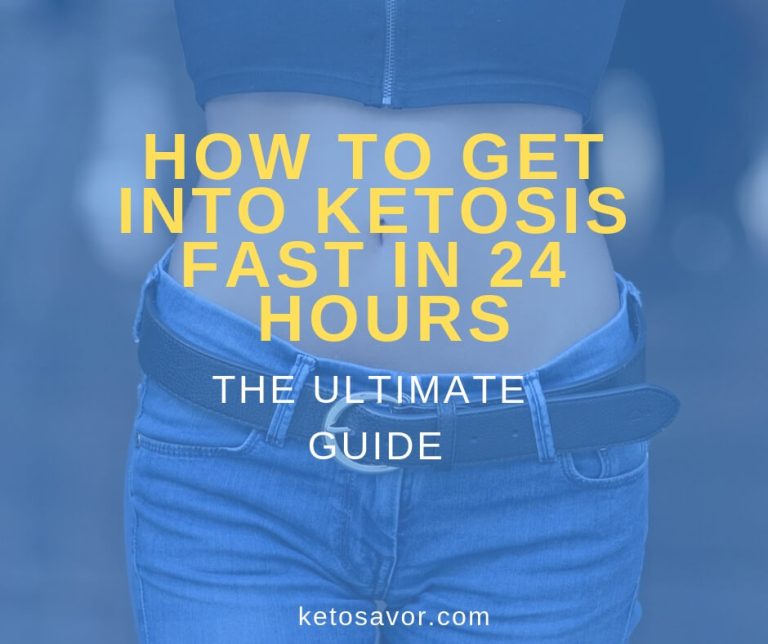Have you ever heard of the keto diet? It’s a type of low-carb diet that focuses on the body being in a state of ketosis. But what exactly is ketosis? Here, we’ve gathered all the information you need to understand ketosis and the keto diet as well. Check out our ultimate guide below!
Table of Contents
What is Ketosis?
Usually, the body metabolizes glucose or sugar to keep your body running. Glucose is a simple sugar that you get in foods rich in carbohydrates such as bread, pasta, and potatoes, among others. All of the carbohydrates you consume is then converted into glucose.
When you’re in a state of ketosis, you significantly reduce your carb intake and consume more fat. Your body will use up the stored glucose in your liver. Does this mean that your glucose is all but gone? Not exactly. If your liver senses that it’s running out of glucose, it can produce more using amino acids.
However, the amount of glucose is simply not enough to provide fuel for the brain — and this is where the good part of ketosis kicks in. When you’re in a state of ketosis, your body begins to rely on fat and ketones more instead carbohydrates for energy. In other words, you let it adapt to a new energy source.
The carbs and sugar are eventually replaced by fat and ketones. And just like how the liver primarily makes and stores glucose, this sizable organ can also produce ketone bodies. When you’re in ketosis, your liver produces these ketones at a faster rate.
But what exactly are ketones? These molecules come from both your body fat and the fat you consume in foods. Ketones are what your fats turn into when your body needs more energy. They ketones go into your bloodstream to help your body function the same way the glucose did.
You can reach a state of ketosis through fasting or physically intensive exercises, but only through following a keto diet can you maintain it in the long run.
Is it good for your body to be in ketosis?
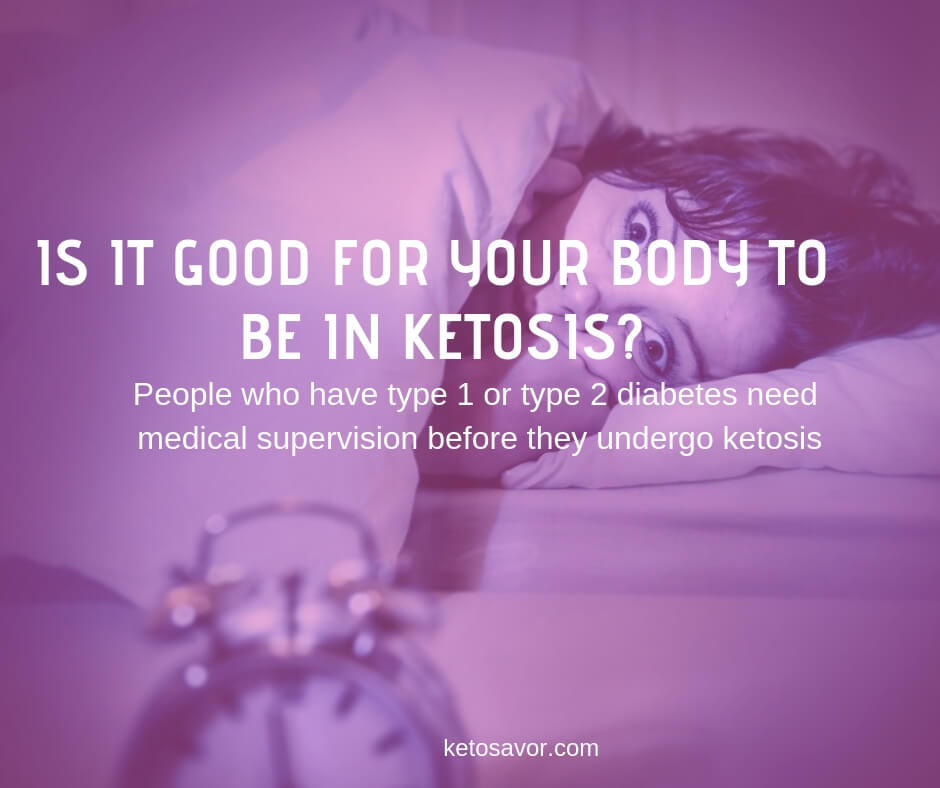
When you’re on a ketogenic diet, you are letting your body stay in a state of ketosis. But is this process good for your body in the first place? There are things to be wary of, but being under ketosis does provide many health benefits.
For one, ketosis has been linked to a reduction in seizures among children. The scientific community is also interested in how ketosis may help treat disorders like autism, Parkinson’s disease, and brain cancer. These still require extensive scientific research, but the possible good effects of ketosis are worth noting.
But perhaps the most common positive effect of ketosis on the human body is weight loss. Low-carb diets are known to cause weight loss quicker than low-fat diets. The overall number of weight loss is pretty much the same in the long run, but those who want quick results can rely on ketosis.
Another good thing about ketosis is that it may cause a short-term reduction in blood sugar levels for people with type 2 diabetes. Ketosis can also reduce the number of triglycerides in your bloodstream. A low-carb diet makes you eat fewer high-carb foods, which means you get less fructose.
If you reduce the fructose intake, you decrease the number of triglycerides in your body. This then lowers your risk of heart disease. However, not everyone should practice the keto diet as much as they want.
People who have type 1 or type 2 diabetes need medical supervision before they undergo ketosis. The same goes for people who are pregnant or have high blood pressure. Also, individuals who had gastric bypass surgery should be wary of the diet.
How long does it take for the body to go into ketosis?
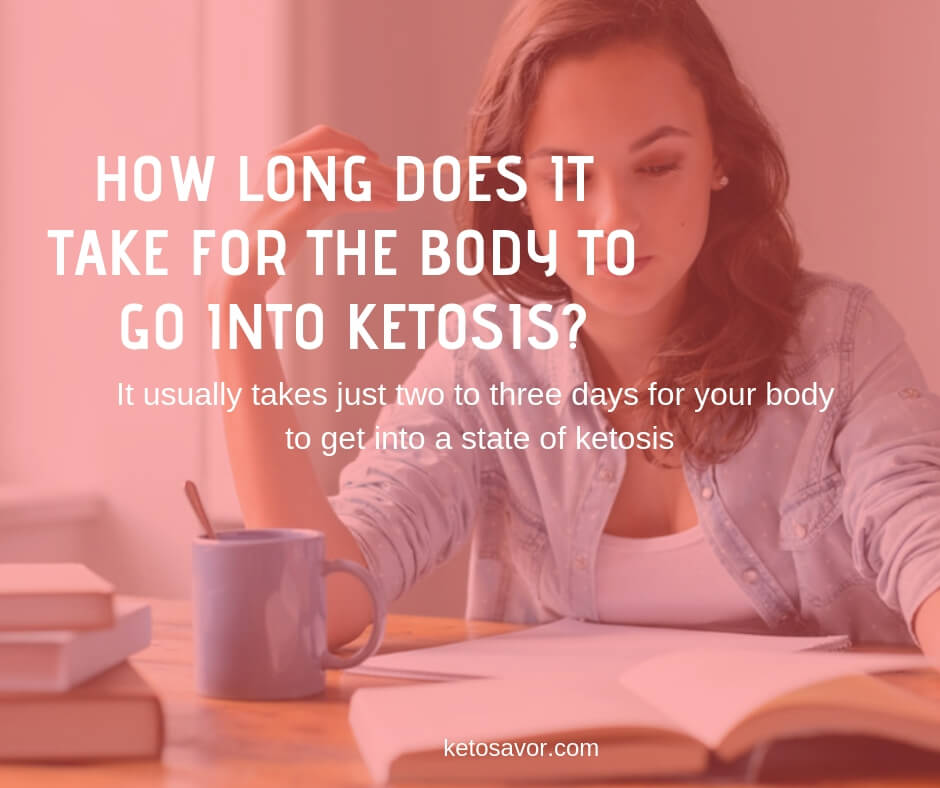
It usually takes just two to three days for your body to get into a state of ketosis. This is due to the fact that the body can only store enough glucose for two days. If you drastically reduce your carb intake to just 50g or even 20g carbs each day, your body will look for a new source of energy.
If you want to be in a state of ketosis as fast as possible, you should not only reduce your refined carb intake but also exercise a lot. Consume more fat and drink lots of water. Some people wait for a full week before their ketosis kicks in while others can have mild ketosis within half a day.
All in all, it depends on several factors such as exercise, diet, and your current body composition.
Can you feel when you are in ketosis?
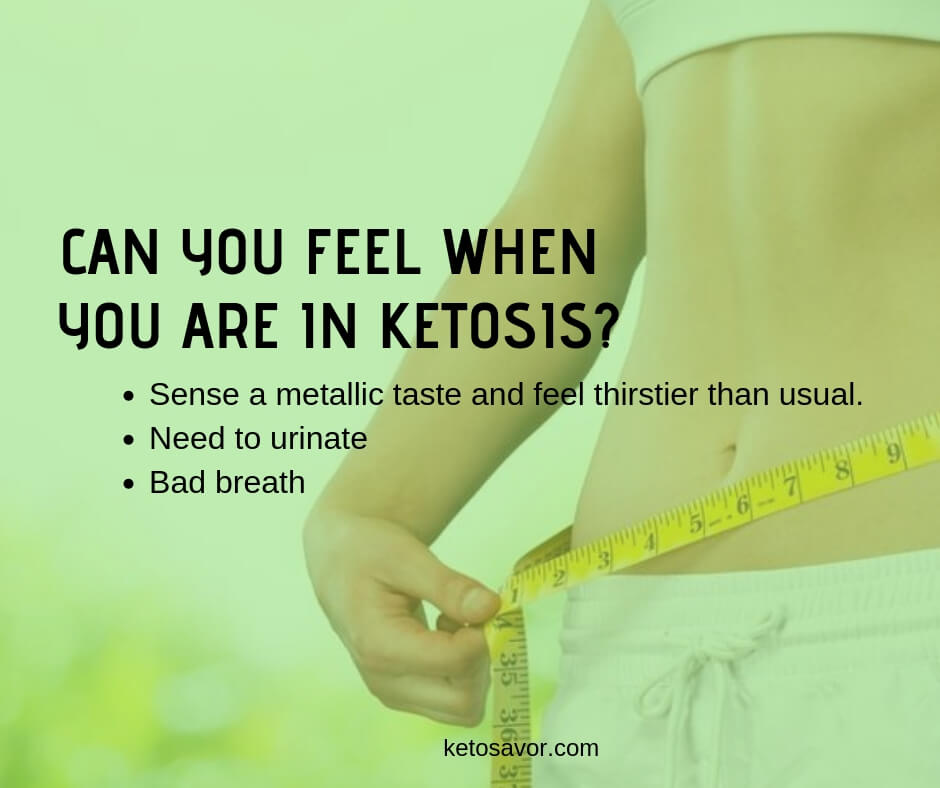
There are several symptoms that indicate your body is already in ketosis. However, not all of these symptoms are good for you. For example, you might sense a metallic taste and feel thirstier than usual. You could feel the need to urinate more each day. Plus, there’s the dreaded keto-induced bad breath.
Another bad symptom is that you feel fatigued, but this usually just happens during your first few days of weeks of ketosis. Cases of insomnia and constipation — among other digestion issues — are also telltale signs.
Good signs of ketosis include the aforementioned weight loss and decreased appetite. And in the long run, you might feel more energized and focused.
Ketosis and Diabetes
It seems ironic at first, but a low-carb diet such as the keto diet might be beneficial for people with type 2 diabetes. While the effects of ketosis and the diet were initially made to deal with epilepsy, there is also promise in them as a treatment for symptoms of type 2 diabetes.
Thanks to the keto diet, you will veer away from a high-carb diet. When you stop eating a lot of carbs, you reduce the number of blood glucose or sugar in your body. This could eventually lead to you no longer needing as much insulin as before — saving you a lot of money in the long run.
Furthermore, the keto diet doesn’t mean you have to eat any type of fatty foods. If you have type 2 diabetes, you should ditch saturated fats and go for fats good for your health. Healthy foods that are usually part of a keto diet include avocado, salmon, eggs, broccoli, and seeds.
Of course, it’s important to consult your doctor before you put your body in ketosis. Otherwise, you might suffer from diabetic ketoacidosis, which we’ll discuss next.
Ketoacidosis
Following the keto diet properly allows you to go into ketosis, but what if you go experience ketoacidosis? Unlike nutritional ketosis that’s largely beneficial for you, ketoacidosis is a terrible condition that requires immediate medical attention. Thus, it’s important to know exactly what it is.
Simply put, ketoacidosis is a condition wherein the body has too many ketones for it to maintain its acid-base balance. Ideally, you should only be burning fat and losing weight when in ketosis. But if you have diabetes or at risk of it, you must constantly watch the ketone level in your body.
Ketoacidosis happens mostly to individuals with type 1 diabetes, particularly if they don’t have enough insulin. Beta-hydroxybutyrate (BHB) is the most common type of ketones in your body. If your BHB level is 10 mmol/L or higher, you’re no longer in a healthy state of ketosis — you already have ketoacidosis.
This BHB level indicates that your body produces insufficient insulin. Women who breastfeed and people who have type 2 diabetes and take a class of medication known as gliflozins should also take caution. Gliflozins lower blood sugar levels, but they can increase your risk of ketoacidosis.
If you experience severe and prolonged dehydration, breathing difficulties, or fatigue as you follow the keto diet, you should seek emergency medical treatment. You need to manage your blood sugar levels through a slow and steady provision of insulin.
Ketosis Benefits
The fats your body burn when it’s in ketosis are usually the harmful type: abdominal fat. This is commonly known as your belly fat, and having more of it increases your risk to colorectal cancer, hypertension, and stroke. But if you practice the keto diet, you can get rid of a good chunk of your abdominal fat.
Being in a state of ketosis through a keto diet can also lessen your appetite — helping you manage your weight better. Likewise, having more BHB ketones may decrease your risk of chronic diseases and neurological inflammation, which is linked to depression and anxiety.
How to Get Into Ketosis
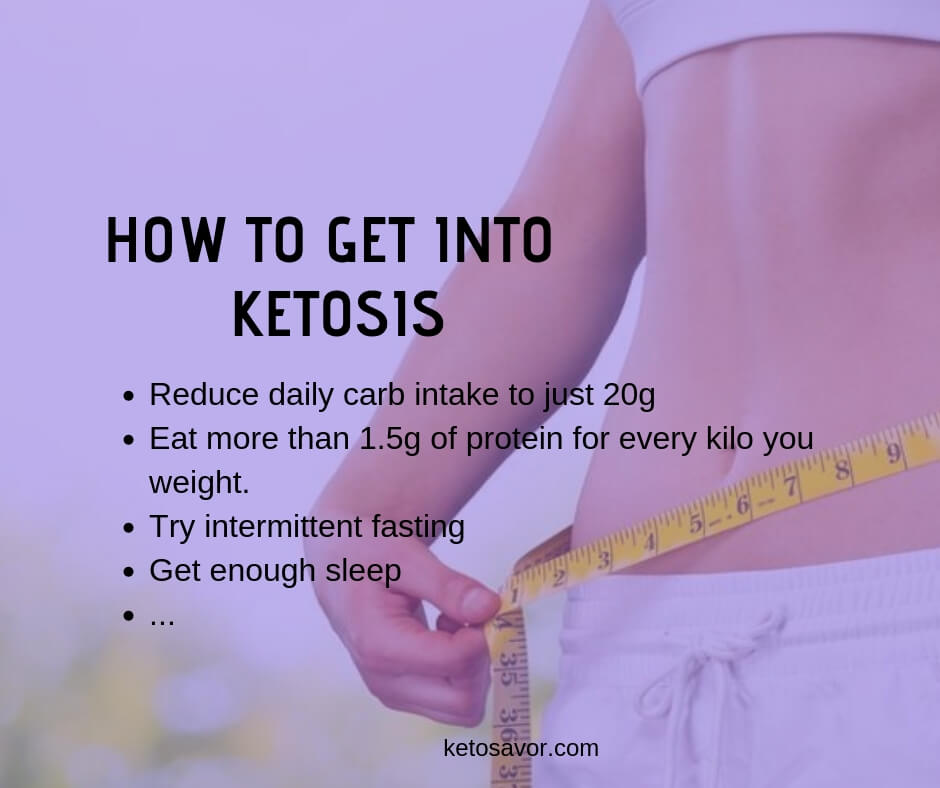
One way to place your body in a state of nutritional or healthy ketosis is to follow the keto diet. This doesn’t just mean having to eat fatty foods; you should follow all the steps we’ll mention to achieve ketosis fast. First, you need to reduce your daily carb intake to just 20 grams.
Dietary fiber is good for your body, so you should count the net carbs and not the total carbs. Likewise, try not to consume too much protein. While the ketogenic diet encourages you to have both fat and protein, having excess protein could accelerate glucose production in your body and affect the ketosis.
Try not to eat more than 1.5 grams of protein for every kilo you weight. If you 80 kilos, you should only eat a maximum of 120 grams of protein each day. Try not to eat just because you feel like it. If you do want a snack, make keto-friendly snacks instead of eating the usual white bread or chocolate bar.
Other ways to help you get into ketosis include exercise. You may lack the energy to do this during the first few days of practicing the keto diet, but you should at least try a few cardiovascular exercises. Even brisk walking will help your body reach ketosis since you burn more glucose.
Moreover, try intermittent fasting. This involves eating only two meals each day within eight hours and consuming only water for the remaining part of the day. Usually, this means skipping breakfast. And lastly, ensure that you get enough sleep — around eight hours each day.
Measuring Ketosis
While there are observable signs, you can also measure your ketone levels to assure yourself that you’re in ketosis. There are three ways to measure it: through your blood, your breath, and your urine.
1) Through Blood
The first method requires a blood ketone meter, which is specifically designed to count the ketones in your blood. Using the blood ketone meter is the most accurate way to check your ketone level.
If you get between 0.5 and 1.0 millimoles per liter (mmol/L), you have mild ketosis. A measurement between 1.0 and 1.5 mmol/L indicates moderate ketosis. Finally, 1.5 to 3.0 mmol/L is the range for deep ketosis — and going over 3.0 mmol/L does not mean you’re in a better state of ketosis.
2) Through Breath
You will need a ketone breath meter to check your ketone levels. What the device measures are the amount of acetone; an increase in acetone levels means that you’re burning more ketone bodies. Thus, all you have to do is breathe into the breath meter and wait for the results to appear in a few seconds.
The result isn’t as accurate as when you use a blood ketone meter. You only get color-coded results that signify different ranges in ketone levels. Still, you can use the ketone breath meter as many times as you want.
3) Through Urine
The last method of measuring your ketone level is through the use of ketone strips. All you have to do is place the strip in your urine and then wait for the results. Just like the second method, you will see a change in color. A darker color or shade usually means that you’re already in deep ketosis.
Using urine ketone strips is the most affordable way to measure your ketone levels. However, note that it isn’t accurate. Dehydration may affect the results. Likewise, it’s better to use it early on in your keto diet. The strips measure ketones called acetoacetates — and these could decrease in number as time goes by.
Optimal Ketosis
The optimal level of ketosis differs among each individual depending on their objectives. But for the most part, you should be looking for a range between 1.5 and 3.0 mmol/L. A ketone level in this range means that you’re going to efficiently lose weight, develop your physical health, or improve your focus.
If you go above 3.0 mmol/L, it’s probably due to exercise or fasting. But this increase in ketone level has no proven benefit so far whether for weight loss or for treating diabetes. And as we’ve mentioned earlier, reaching 10.0 mmol/L indicates you have ketoacidosis and in need of medical treatment.
But don’t let a ketone level lower than 1.5 mmol/L or slightly higher than 3.0 mmol/L discourage you. As long as you’re getting good and healthy results, you shouldn’t worry so much about following the general optimal range.
Conclusion
All in all, ketosis is a metabolic state in which your body produces relies more on ketone bodies than glucose for energy. It’s a state that you can achieve for a long period by following the keto diet. There are good and bad symptoms of ketosis, and you can measure your ketone levels in three ways.
Ketosis is not just about weight loss — it has benefits for your physical and mental health. However, it’s also important to know the relationship between ketosis and diabetes. You should aim for nutritional or optimal ketosis rather than increasing your ketone levels to the point of developing ketoacidosis.
We hope that our ultimate guide on ketosis helped you understand what it’s all about. If you have any questions, feel free to send us a comment.


